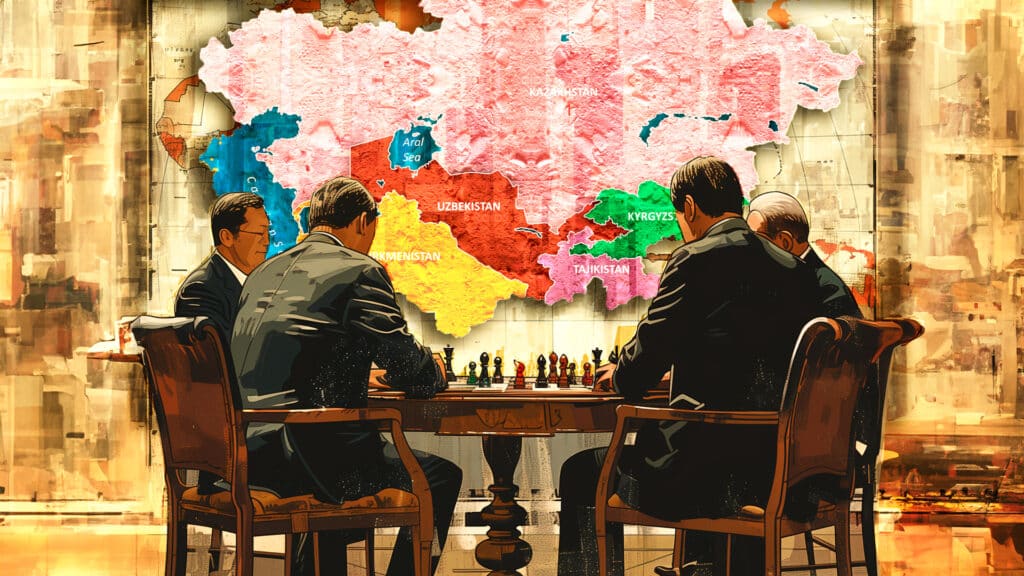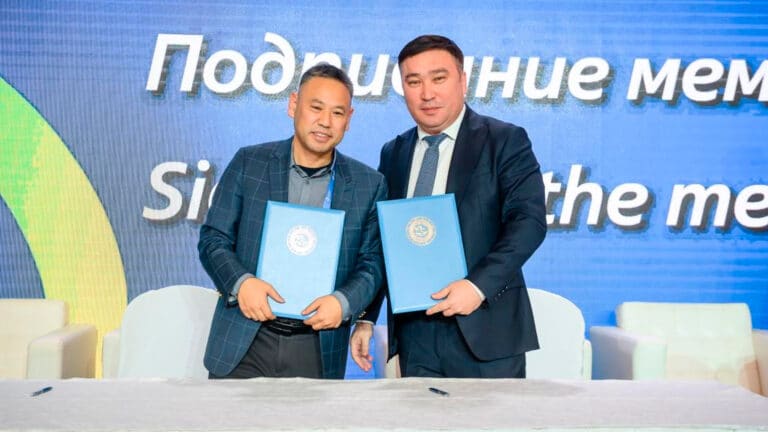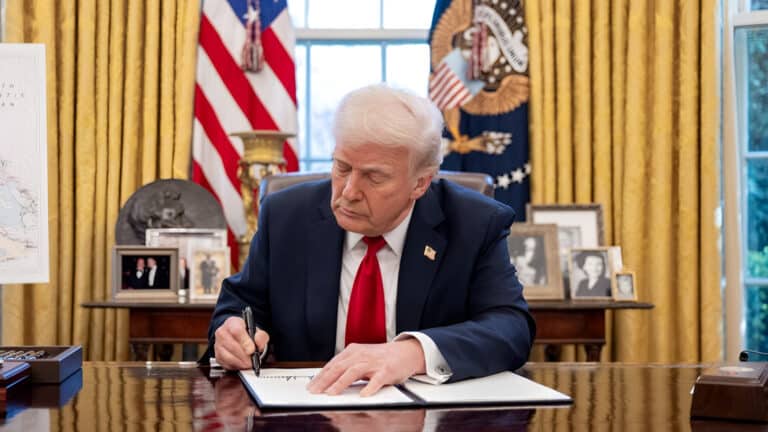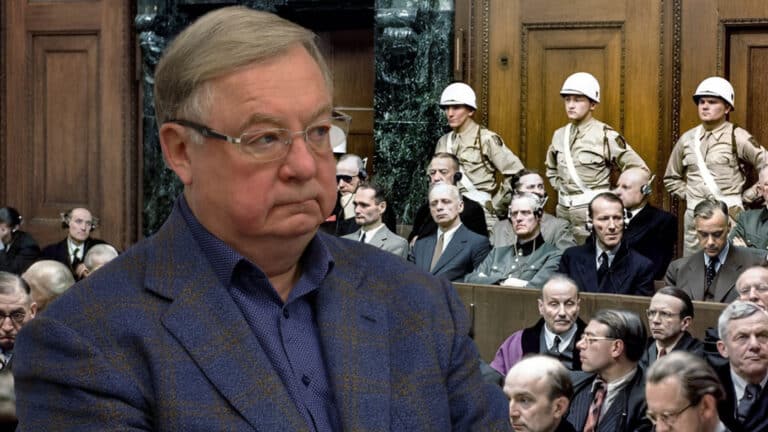
Central Asian countries should drop any ambitious projects at the regional level and focus on shaping common approaches to interacting with key third-party partners.
Our people are obsessed with history. Any book about the history of Kazakhstan is bound to be a bestseller, and historians are welcomed on various YouTube channels. We feel good when reflecting on the past, projecting its glory onto our future. If we look at current processes in Central Asia, we will see something resembling what happened in the region two or three decades ago. For me, this is not about glory but rather a routine that our countries have not been able to overcome when it comes to creating regional integration mechanisms.
Going over old ground
All five Central Asian states declared their readiness for integration immediately after the collapse of the Soviet Union. However, soon after, Turkmenistan declared permanent neutrality, refusing any alliances in its foreign policy. Tajikistan was dealing with civil conflict at the time, while only Kazakhstan, Kyrgyzstan and Uzbekistan experienced real integrational processes. In 1993, they created a Central Asian Union. Later, they agreed to establish an economic union and a common economic space and then signed a tripartite agreement on eternal friendship in 1997. Furthermore, the three states signed the Treaty on Friendship, Good-Neighborliness and Cooperation for the Development of Central Asia in the 21st Century. Turkmenistan and Tajikistan have yet to sign the document.
In 1998, the Central Asian Union was renamed the Central Asian Economic Union (CAEU) and was joined by Tajikistan. At the time, the CAEU actively worked on institutionalization, establishing the Inter-State Council at the level of presidents, councils of prime ministers and defense ministers and the executive committee—a working body of the Inter-State Council. They signed numerous agreements and adopted various programs and projects, including an integration strategy that stipulated the gradual formation of a common economic space.
In 2022, the state leaders admitted that all those councils, committees and agreements didn’t work or bring any benefits to member states. They decided to close all those structures and rename the CAEU to the Central Asian Cooperation Organization (CAC). In fact, they removed the word «economic» from both the name of the organization and from its list of cooperation priorities.
The International Fund for Saving the Aral Sea has also failed to help Central Asian states reach a mutual understanding of the water issue. In 2003, Nursultan Nazarbayev proposed the idea of an international water and energy consortium but failed to gather support from other Central Asian states. Now, President Kassym-Jomart Tokayev is suggesting the same, although Kazakhstan’s neighbors haven’t become more excited about the initiative over the last twenty years. However, on a bilateral level, the regional countries can solve even complicated issues. For instance, Uzbekistan and Kyrgyzstan successfully negotiated the issue of managing the Andijan (Kempir-Abad) Reservoir last year.
Vital but not prestigious
Kazakhstan has paid great attention to relations with Central Asian states since 1991, when the country became independent. However, Kazakhstan’s approach to this vector of its foreign policy was a bit superficial («We’re fraternal countries, what else do we need?»), while a long-term strategy in this sphere was absent. Many diplomats considered working in neighboring countries non-prestigious. There wasn’t a single diplomat in Kazakhstan who worked in Central Asia before accepting his position.
What is our perception of cooperation with Central Asian states? What role do our regional neighbors play in Kazakhstani projects? The Concept of Foreign Policy of the Republic of Kazakhstan for 2020-2030 states that the country needs to establish its status as the regional leader in Central Asia. We believe it would be beneficial for all of our neighbors to register their businesses at the AIFC and trade via the Khorgos International Center for Border Cooperation and the ports of Aktau and Kuryk.
Even though our Central Asian brothers and allies have never refused to use the opportunities Kazakhstan has to offer, they don’t want to limit themselves. For example, they are creating a new corridor from China to Uzbekistan via Kyrgyzstan to deliver cargo within two days, instead of the ten-day route through Kazakhstan. Kyrgyzstan, Russia and Uzbekistan have also signed a memorandum of understanding aimed at forming and developing an international multimodal transport corridor—Russia, the Caspian Sea, Turkmenistan, Uzbekistan and Kyrgyzstan—bypassing Kazakhstan. This document was signed during a transportation summit for the Shanghai Cooperation Organization member countries last year. Moreover, Uzbekistan plans to create the Tashkent International Financial Center, which would be a direct competitor to Kazakhstan’s AIFC.
What are the results of multilateral cooperation? Kazakhstan’s 2019 initiative to hold a meeting for Security Council secretaries of all Central Asian states finally materialized in May of this year. This took almost five years, although the secretaries met at many other meetings within the CIS, CSTO, SCO, OTS, and 5+1 formats (with Russia and India).
An agreement on the joint development of transportation systems in Central Asia, initiated by Shavkat Mirziyoyev in 2019, was signed in 2023. It took two years to prepare for the Central Asian Youth Forum in Tashkent in November 2023. President Mirziyoyev proposed holding the event in 2021.
The President of Tajikistan, Emomali Rahmon, also suggested establishing a Central Asian investment fund to finance regional projects, but this idea has hung in the air. Even though experts acknowledge the importance of this project, there is no funding for it. Last year, President Mirziyoyev proposed establishing a «full-fledged zone of free trade,» but this idea has also remained in limbo. There is little doubt that initiatives aimed at holding various conferences, summits or framework agreements will eventually be fulfilled. However, the creation of new institutions in the sphere of economic cooperation will not be as easy.
It is not a mere coincidence that a conceptual article by President Tokayev, published on the eve of the sixth consultative meeting, lists the creation of a regional security system among the crucial tasks and goals that can affect the destiny of the region and its people.
Get out of routine
In the past, the Central Asia project came to an end by being absorbed into the larger Eurasian project. We do not plan to create any new alliance and this is our key political achievement so far. On August 9, 2024, the Central Asian countries signed the Central Asia 2040 strategy, a new concept for regional cooperation. This strategy states that each state in the region has the right to choose its direction of political, economic, social and cultural development based on its historical background and national peculiarities, and that this right should be respected.
We have no problem with economic cooperation, but we do have problems with setting unrealistic and overly ambitious goals. Currently, our key trading partners are China, Russia, Turkey and the EU. This is why we will negotiate trade, investment and transportation issues within the framework of various integration processes in Eurasia, such as the EEU, OTS and SCO. In the 5+1 format, we cooperate with individual states (India, China, Russia, South Korea and Japan) and large alliances like the EU or Gulf nations.
All our partners agree that Central Asian states should coordinate their actions and stay united. However, they see the goal of this unity differently. In Washington, D.C., officials believe that we must assist Afghanistan and counter Chinese expansion. Beijing wants us to stand against three forces of evil (transnational organized crime, illegal drug trafficking and cybercrime) and build a close partnership between Central Asia and China. Even the region’s geography changes depending on the interests of external actors. Under the oil and transit approach, the region includes Azerbaijan. The uranium approach includes Mongolia. The Afghan approach (popular in the U.S. and India) includes Afghanistan. All these countries and alliances have their strategy for Central Asia, whereas Central Asia has no strategy or even joint approaches toward these countries.
I believe the best way to escape the integration routine in Central Asia is to drop the idea of creating something resembling the EU and start negotiating joint positions toward the concepts and strategies that Ankara, Brussels, Washington and Moscow offer us as a region.
The author’s opinion may differ from the position of the editorial staff.













